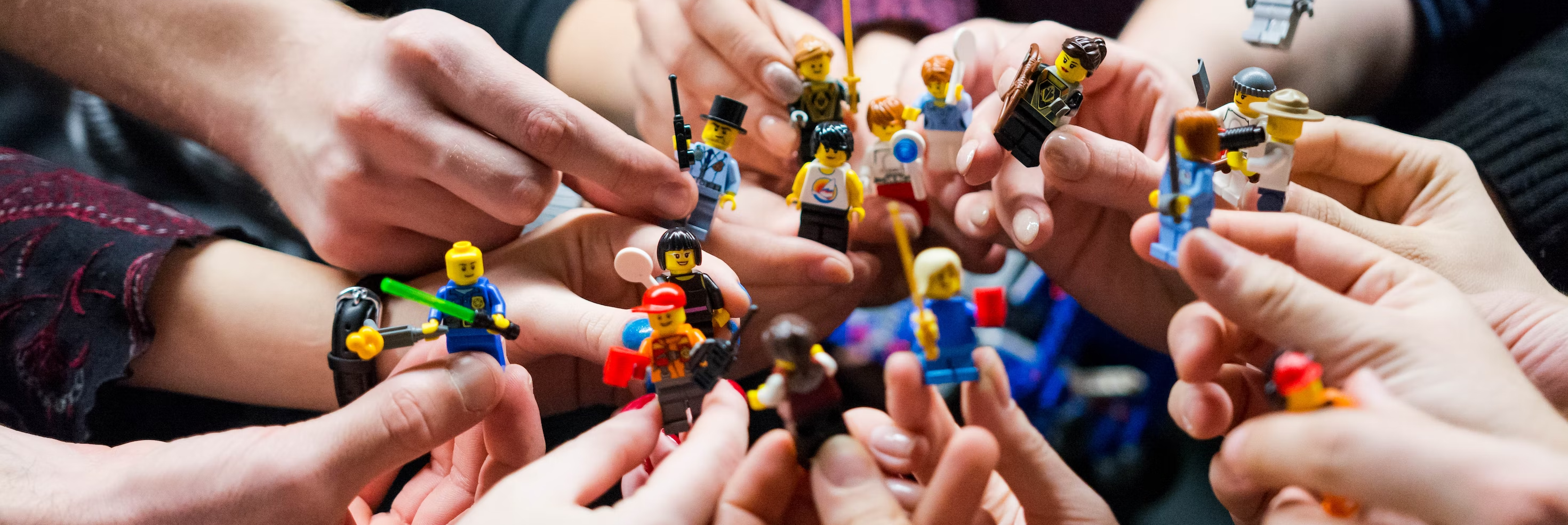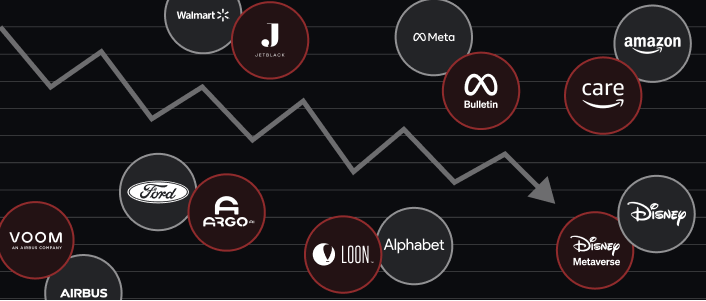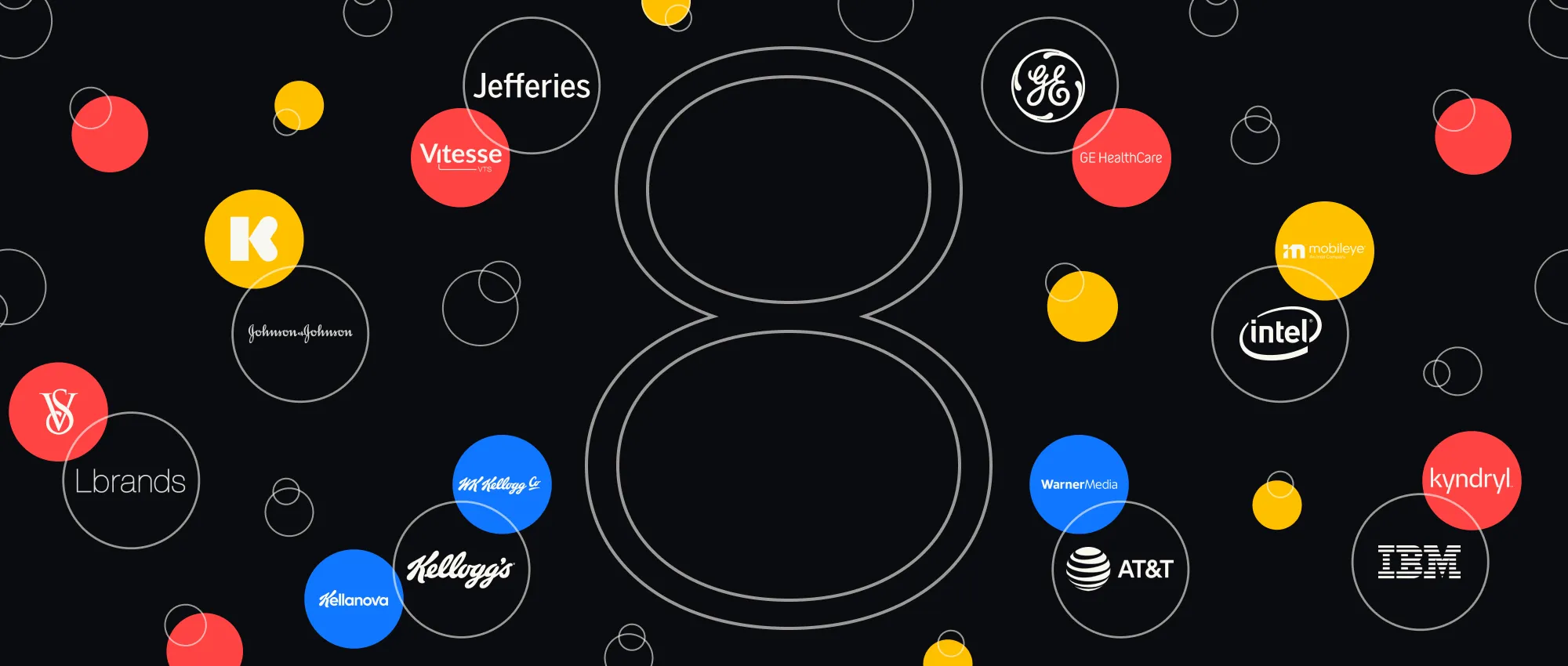Key takeaways
Business model innovation has always been the lifeblood of successful businesses, enabling them to change and adapt quickly to meet potential disruptions head-on. It’s a continuous process that involves constant iteration leading to new and improved ways of:
- Generating revenue
- Managing costs and resources
- Acquiring and retaining customers
- Delivering products or services
This type of innovation can take many forms, including the creation of new value propositions, pricing strategy changes, testing new distribution channels or entering new partnerships and collaborations (just to name a few). The goal? To achieve a competitive advantage, improve customer satisfaction, and boost profitability.
In many cases, the ability to evolve and adapt can be a more important success factor than the business model itself.
To give you a better idea of how this works in practice, we’ve listed 5 proven business models along with real-world hero and zero cases, illustrating how adaptability can be the difference between success and failure. You can also access the full Bundl report on this topic here.

1. Freemium
Freemium models provide a free, stripped-down version of a product or service with the goal of attracting a large user base. The free version typically has limited features or functionalities but is still useful enough to attract a wide audience. Under this model, users are encouraged to upgrade to a premium, paid version of the offering with access to advanced features.
This approach enables companies to leverage the network effect of having a large user base while still generating revenue from a subset of those users.
Freemium done right
Case: Revolut
Country: UK
Founded: 2015
Revolut is a digital banking app offering a wide variety of banking and lifestyle services, including currency exchange, international peer-to-peer transfers, trading, and travel insurance.
Why they succeeded:
- Constant innovation through new paid services.
- Differentiated from the competition, keeping customers loyal.
- Free version was efficient, and upgrades were quick and easy.
- Generates revenue from paid and free-plan users through above-limit fees and commissions on insurance and trading services.
Freemium done wrong
Case: Meetric
Country: Australia
Launched: 2020 (shutdown in 2022)
Meetric was a browser extension tool for meetings that allowed users to prepare an agenda, write down meeting notes and assign action items on their own or with others.
Why they failed:
- 90% of services were free, so there was no incentive to pay.
- No real differentiation from competitors.
- A time investment was required for users to discover the value of the service.
- The only source of revenue was the premium plan.

2. Crowdsourcing
Crowdsourcing leverages the collective knowledge, expertise, and creativity of a large group of people to complete a task, generate new ideas, or solve complex problems. It involves tapping into the distributed intelligence and diverse perspectives of a crowd, often through an online platform, to produce results that are more efficient, innovative, and cost-effective than traditional methods.
The approach can be used in a variety of contexts, from product development and design to scientific research and social activism (just to name a few).
Crowdsourcing done right
Case: Lego Ideas
Country: Denmark
Founded: 2012

Lego Ideas is a platform that allows Lego fans to submit ideas for new Lego sets, and if the idea receives enough support from the community, it can be turned into an official Lego set.
Why they succeeded:
- They set rules and specs to successfully filter incoming ideas.
- They added speed and maintained quality in their development cycle by reusing existing pieces.
- They secure demand by letting the crowd (i.e. customers and investors) decide which sets get developed. 90% of sets sell out in their first release.
Crowdsourcing done wrong
Case: Quirky
Country: USA
Founded: 2009 (shutdown in 2015)
Quirky developed a crowd-sourced invention platform that engages outside inventors and contributors to collaborate in every aspect of the product creation journey.
Why they failed:
- They developed a wide range of products, but only a few become a hit.
- Despite fast development times, manufacturing costs remained high, cutting into profits.
- Winning ideas were picked by the inventor community and not potential customers, leading to decreased sales.

3. Mass customisation
Mass customisation combines the efficiency of mass production with the personalisation of custom-made products. It allows customers to tailor purchases to their specific preferences while maintaining the benefits of fast delivery and lower costs associated with mass production. There are four primary types of mass customisation:
- Collaborative customisation: This involves working closely with customers to design and produce products that meet their specific requirements.
- Adaptive customisation: This involves creating products that can be easily modified or adjusted by customers to meet their changing needs.
- Transparent customisation: This involves providing unique products for individual consumers while maintaining consistent branding and packaging.
- Cosmetic customisation: This involves offering customers the opportunity to customise the appearance of their products, such as adding personalised designs or colours.
The approach enables companies to differentiate themselves from competitors while also increasing efficiency and reducing costs.
Mass customisation done right
Case: YSL Rouge Sur Mesure
Country: USA
Launched: 2021

YSL Rouge Sur Mesure (powered by Perso) is an AI-powered device with a dedicated app that allows consumers to make a multitude of personalised lipstick shades on-the-spot at home.
Why they succeeded:
- Their AI app simplifies the experience, making it fun and easy for customers to get their desired shade.
- The customisation is done at home, anytime.
- Customers are willing to pay for the service, despite online reviews stating that it’s pricy.
Mass customisation done wrong
Case: Shoes of Prey
Country: USA and Australia
Founded: 2009 (shut down 2019)
Shoes of Prey offered shoppers ways to customise and design their own footwear using a web-based 3D design platform. Customers could pick the colours, fabrics and exact size specifications, and the company would hand-make a personalised pair of shoes and deliver them worldwide.
Why they failed:
- The offer was overwhelming and time-consuming, captivating a small pool of loyal customers but failing to attract the mass market.
- The unit cost for producing each pair of shoes was too high.
- Customers were unwilling to pay for the higher production costs associated with the offering.

4. Peer-to-peer (P2P)
Peer-to-peer (P2P) enables individuals to directly exchange goods, services, or money with each other, potentially reducing the need for traditional intermediaries. By eliminating the need for the middleman, P2P models can offer greater efficiency, flexibility, and lower transaction costs for both buyers and sellers.
This approach usually relies on user ratings and reviews to build trust and ensure quality and may provide additional features such as insurance or dispute resolution to protect users.
Peer-to-peer done right
Case: TaskRabbit
Country: USA
Founded: 2008
TaskRabbit is an online marketplace that matches individuals seeking to outsource tasks, like cleaning and furniture assembly, with reliable people willing to do them.
Why they succeeded:
- It was a flexible offer that attracted a high volume of users.
- It tapped into a market of people with spare time looking for new revenue sources.
- The service is convenient and easy to use, automatically matching clients with a selection of taskers.
Peer-to-peer done wrong
Case: KodakOne
Country: USA
Founded: 2018 (shutdown in 2019)

KodakOne was a blockchain-based image rights management platform that allowed photographers to license their work and monetise them using the KodakCoin cryptocurrency.
Why they failed:
- The offer wasn’t differentiated enough. It was too similar to existing platforms, and few users preferred crypto over fiat currency.
- It used its own crypto coin, which had uncertain value and withdrawal status.
- It was a hard concept for users to understand and adopt at that time.

5. Product-as-a-service (PaaS)
As the name suggests, this model offers access to a product, providing it as a service rather than selling it outright. The company retains ownership of the product and charges customers based on usage or output.
This approach allows customers to enjoy the benefits of the product without incurring the upfront cost of purchasing it. It also enables the company to maintain an ongoing relationship with its customer while generating recurring revenue.
PaaS done right
Case: Lynk & Co
Country: Sweden
Founded: 2016
Lynk & Co offers access to a car on a flexible, month-to-month basis, allowing it to be shared. It provides access to mobility on the customer's terms, with no long-term agreements and the option to cancel anytime.
Why they succeeded:
- Easy and clear options enabling customers to pay-per-use, subscribe monthly or buy.
- They provide flexible and affordable options.
- They offer digital services but also have physical hubs to create a community feel.
PaaS done wrong
Case: ToyGaroo
Country: USA
Launched: 2010 (shutdown in 2012)
ToyGaroo was a startup that enabled parents to rent toys for their kids and have them shipped by mail. The idea was to send the toys back when the child outgrows them.
Why they failed:
- They failed to limit their offer early on, resulting in increased shipping and inventory costs to keep up with such a wide variety of products.
- The pricing scheme was confusing and non-transparent.
- The offering led to many one-time curiosity interactions with a high churn rate.
Closing thoughts
Navigating the business world can be a challenging task, especially in today’s rapidly changing and unpredictable environment. Use the examples above as a source of inspiration and insights to help you shape your strategy for long-term success.
For a more in-depth analysis of these five business models plus more inspiring case studies, download our latest report: 5 proven business models of recent years.
______
Want to ideate and develop disruptive new concepts with the potential to transform industries? We can help you explore new business models and technologies that leverage your existing assets and align with your corporate strategy.











.svg)


